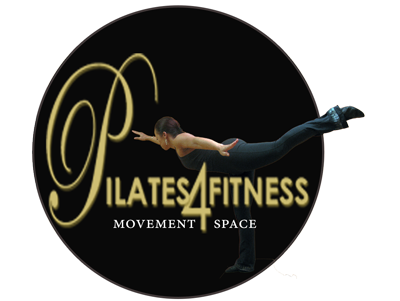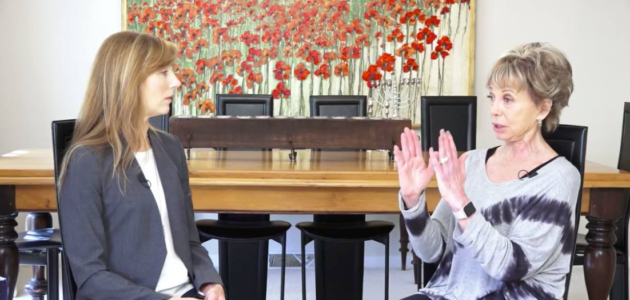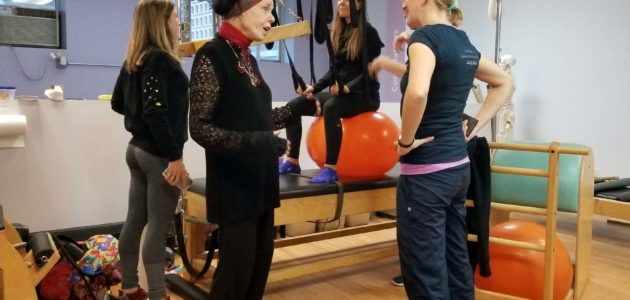I don’t make new year resolutions anymore. I really haven’t told those lies to myself for quite sometime. It’s probably because I work and teach to follow a continuous path of “forward movement” rather than allowing myself to fall into the trap of “stops and starts. ” I also try very hard to encourage students to find and maintain that same level of consistency in their work.
So, rather than wholesale, concrete resolutions, I have found that a few +pluses and -minuses, an add or subtract here and there, and selective adjustments and additions makes much more sense to being able to be successful in making changes in our lives and our bodies.
A few of my conscious adjustments and additions to movement and teaching come from two powerful women I met in the Teacher’s workshops I attended in December.
I met Mary Bowen and spent six hours with her in a two-part workshop/dialogue at a Power Pilates Education Conference. I needed and wanted to meet and experience this living elder first hand after she sent a FB friend request earlier in the year (which I must say, delighted me to no end) . I was drawn to Mary’s workshop with intrigue for the melding of Jungian Psyche archetypes with movement in the body.
Also in December, on the weekend of our first snowfall on the East Coast, I attended a two-day workshop with Sonje Mayo at The Art of Control studio in Stamford, CT. I was drawn to it for my clients with severe scoliosis and my desire to find out more about Schroth, a therapeutic movement methodology that she incorporates as a Pilates teacher. The decision to attend was cemented after watching a 3 part interview Sonje gave to Alisa Wyatt in her home studio in TN. A strong opinionated teacher with a perspective that was unique and passionate in an area that few in the world knew anything about.
The wit and grit of both of these women was pure delight to me. They each expressed complete comfort in their personal and creative expression, speaking to the legacy of Joseph Pilates while cementing their own personal work and legacy as teachers and practitioners.
Was it just more of the same? Nope. Not a smidgen of “sameness. ” Lots of adjustments and additions came out of the hours with both of them.
Sonje Mayo
Particularly in the case of Sonje, the *adjustments and additions* she offered for work with the curves of the spine are distinct. To date, all my classical Pilates training has dictated asymmetrical training, “weak-strong-weak” training approach; which clearly makes sense for an injured body through the course of its healing. However, the spine of an adult with scoliosis and a curve in excess of 40 degrees, there is no strengthening possible to fix, correct or adjust the weak side. There is no pushing, pulling or realigning structural curves. It is what it is. The older the body, the more difficult the path of “unlearning” the compensating structural imbalances.
Sheri is one of the reasons I was so excited about meeting Sonje. She is a 60-year old woman with a 50-degree curve that was sent by her physician to find a Pilates instructor – – me – – 15 years earlier. We made a lot of progress together with private and Mat training. Her body responded and she never missed a session. Then like Sonje said (and experienced herself in her mid 50s), something happened. Sheri’s curvature increased a few degrees. She began to periodically complain of pain above and below the apex of the curve, or as Sonje called it, the “prominence.” Pilates was not helping to arrest the pain. She suffered with migraines, pain at the hip and used injections to anesthetize the pain.
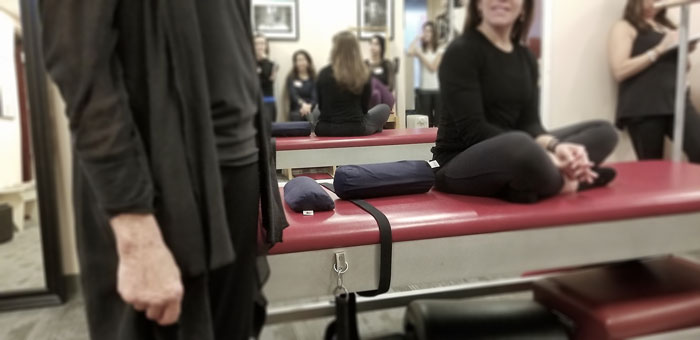
Pilates had helped Sheri feel whole, strong and lifted in her body’s structure. I modified our work with more extension, pillows and use of the small barrels on the days that Sheri expressed distress when coming into the studio. On her good days, the classical reformer workout kept her lifted, open and elongated.
However, it was these simple adjustments and additions from Sonje that I immediately employed with Sheri and other students with scoliosis that had a noticeable, immediate impact. It was as if the light was turned on in a darkened room. I never looked at this as an option to pursue, yet it made the most credible sense in application.
- No twisting/rotation into the convex prominence – doing so exacerbates the structural imbalance further. In place of the rotation, seek extension up and out of the pelvis.
- No rolling – Duh! It’s is impossible to roll down the center of a spine with scoliosis. Students try really hard, and it’s a fake at best. A feeble attempt to stay centered down the mid-line.
- Adjusting the hiked hip – simply softly bending the knee of the *seemingly longer leg* leveling the pelvis and eliminating pain in the lower back – virtually instantly. This is to be used in all standing postures.
- Plugging the concave curve – to balance out the void in the back as a result of the convex prominence and spinal rotation.
Sheri knew about the Schroth methodology from her own research. We also knew that there were limited practitioners in the NY/NJ area. We discussed the common sense approach that Sonje and Schroth brought to our awareness and have whole-heartedly embraced these adjustments as the rule.
Mary Bowen
I stole this cue from Mary and have been using it consistently ever since, “Nipples Up!” It gets a giggle and the intended action instantly. I previously would tell students to “lift their heart,” “lead with the heart” but “nipples up” is really what we all want to accomplish with the workout, isn’t it?
Pilates and Contrology are yang in energy. My key takeaway reminders, additions and adjustments from the hours with Mary was to more fully embrace the yin, and anima, the softness and the depth of stillness and silence in the work.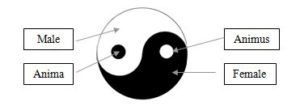
“Jung’s goal with developing the archetypes anima and animus was the unburying of the wild and innate aspects of the self, a door to open into the deeper self. This deeper self is the health of all humans, the balance between nature & the human soul, yin & yang, man & anima, woman & animus,” states Gary Z McGee of Fractal Enlightenment.
Mary admonished us to “work to make the negative positive, ” to “go at the rate of your weakness.”
Said another way, “honor all the things that drive us nuts.”
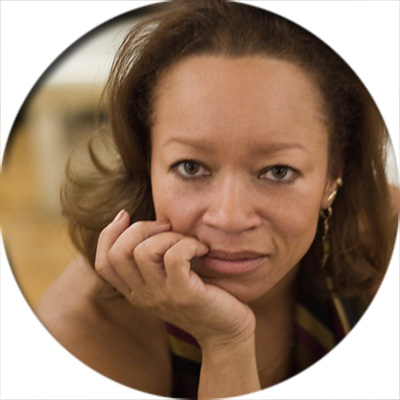
Gina Jackson, is a classically trained Pilates Teacher and has been teaching along the Gold Coast of Hudson and Bergen County, NJ for the past fifteen+ years.
Certified by Power Pilates of New York, Gina has trained with Master Teachers Bob Liekens, Susan Moran and Brett Howard; loved workshop training with Cary Regan and Blossom Leilani-Crawford and has particularly enjoyed listening to the personal stories as told by Pilates Elders, Kathy Grant and Lolita San Miguel.
An active teacher and blogger, Gina manages a private personal training business supporting a myriad of clients, teaching all to honor their health, strength and life with the principles of Pilates at its core.
